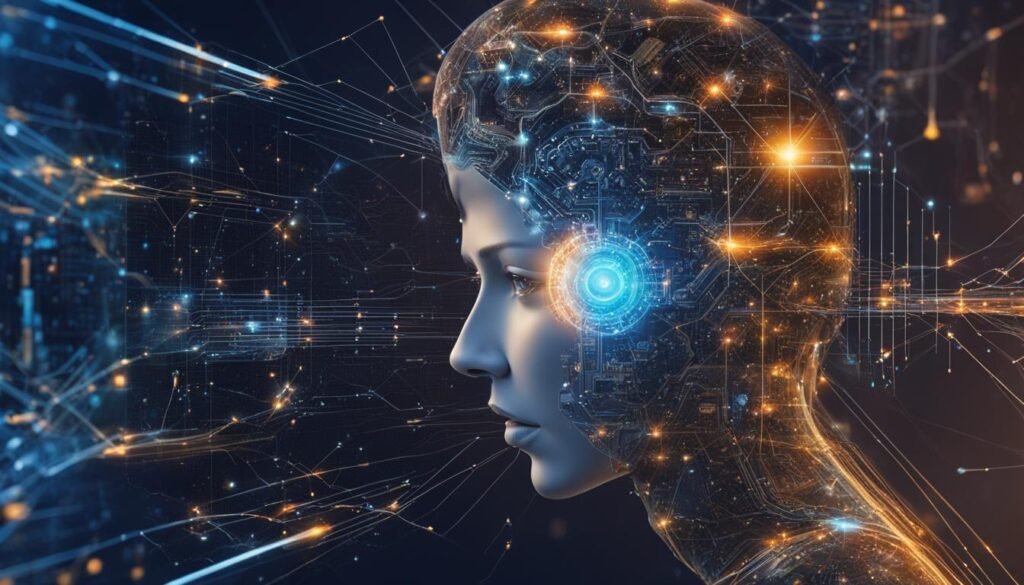
Understanding What is Artificial Intelligence and Machine Learning

Greetings! In today's ever-evolving technological landscape, it's essential to grasp the concepts of artificial intelligence (AI) and machine learning (ML). These terms are often used interchangeably, but they have distinct meanings and applications, so let's dive in and demystify them.
Artificial intelligence refers to computer systems that possess the ability to perform tasks typically requiring human intelligence. Think of speech recognition, decision-making, problem-solving, and more. On the other hand, machine learning is a subset of AI that focuses on training computer systems to learn from data and improve their performance over time.
Both AI and ML play crucial roles in shaping the future of technology, so let's explore the differences and understand how they contribute to various fields.
See Also... Unveiling the Details: What is the Definition of Artificial Intelligence?
Unveiling the Details: What is the Definition of Artificial Intelligence?Key Takeaways:
- Artificial intelligence (AI) and machine learning (ML) have distinct meanings and applications.
- AI refers to computer systems performing tasks requiring human intelligence.
- ML is a subset of AI focusing on training systems to learn and improve from data.
- Understanding the differences between AI and ML is crucial.
- Both AI and ML are shaping the future of technology in diverse industries.
AI vs. ML: Understanding the Difference

When it comes to artificial intelligence (AI) and machine learning (ML), it's important to understand that they are not interchangeable terms. While they are related concepts, AI is a broader field that encompasses the development of intelligent machines, while ML is a specific approach to achieving AI.
So, what exactly is the difference between AI and ML? AI focuses on creating computer systems that can perform tasks that require human intelligence, such as speech recognition, decision-making, and problem-solving. On the other hand, ML is a subset of AI that involves training computer systems to learn from data and improve their performance over time.
To put it simply, AI is the broader umbrella term, while ML is a technique used within the field of AI. AI encompasses a wide range of applications, from self-driving cars to virtual assistants, while ML specifically refers to the use of algorithms and statistical models to enable machines to learn and make predictions or decisions based on data.
See Also... Exploring the Advantages and Disadvantages of Artificial Intelligence
Exploring the Advantages and Disadvantages of Artificial IntelligenceThink of AI as the overall goal of creating intelligent machines, and ML as one of the tools used to achieve that goal. While both AI and ML have the potential to revolutionize industries and society as a whole, understanding the distinction between the two is crucial for grasping the full scope and potential of artificial intelligence.
The Impact of AI and ML on Democratic Governance
When we think of artificial intelligence and machine learning, we often associate these technologies with business and industry. However, their influence extends far beyond the corporate world. AI and ML have the potential to revolutionize democratic governance, bringing about more efficient and secure electoral processes.
One area where AI and ML can make a significant impact is in the administration of elections. By leveraging AI-powered tools, we can enhance the efficiency and accuracy of voter registration, ballot counting, and result reporting. These technologies can assist in identifying anomalies in voter lists and voting machines, detecting fraudulent activities, and simplifying the overall voting process.
See Also... Discover What is Artificial Intelligence Course Today!
Discover What is Artificial Intelligence Course Today!Moreover, AI and ML can help ensure the integrity of elections by strengthening data security measures. With the increasing prevalence of cyber threats, it is essential to safeguard the democratic process against unauthorized access and manipulation. AI algorithms can analyze patterns and identify potential vulnerabilities, allowing us to proactively address security risks.
Another crucial aspect where AI and ML can contribute to democratic governance is in improving decision-making processes. By analyzing vast amounts of data, these technologies can assist policymakers in understanding complex issues and predicting outcomes. This data-driven approach can lead to evidence-based policy development, enabling more informed decision-making for the benefit of society as a whole.
FAQ
What is the difference between artificial intelligence (AI) and machine learning (ML)?
Artificial intelligence refers to the development of computer systems that can perform tasks that would typically require human intelligence. Machine learning, on the other hand, is a subset of AI that focuses on training computer systems to learn from data and improve their performance over time.
AI is a broader concept that encompasses the development of intelligent machines, while ML is a specific approach to achieving AI. While they are related, AI and ML are not the same thing.
What can AI and ML be used for?
AI and ML have applications in various industries, including healthcare, finance, and transportation. They can be used for tasks such as speech recognition, decision-making, and problem-solving.
How can AI and ML impact democratic governance?
AI-powered tools can assist in administering elections by making processes more efficient, reliable, and secure. They can help identify anomalies in voter lists and voting machines, detect fraud, and streamline ballot counting and reporting.
What are some examples of AI in democratic governance?
Examples of AI in democratic governance include the use of facial recognition technology for voter identification, the analysis of social media data to understand public sentiment, and the development of predictive models to forecast election outcomes.
Source Links
- https://www.linkedin.com/advice/0/what-latest-trends-circuit-design-software-skills-electrical-design-wfo4e
- https://www.techtarget.com/searchcio/news/366560426/Former-OpenAI-CEO-gains-strong-legal-backing-with-Microsoft
- https://www.brookings.edu/articles/ai-can-strengthen-u-s-democracy-and-weaken-it/
If you want to know other articles similar to Understanding What is Artificial Intelligence and Machine Learning you can visit the Blog category.
Leave a Reply






Related Post...